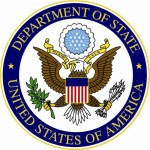The U.S.State Department has approved its first policy for selling armed drones to allies. It has just published new guidelines that set out procedures for both commercial and military drone exports, which the department said it will assess on a “case-by-case basis,” including “armed systems.” It also seeks to impose restrictions on purchasers concerning how the unmanned systems can be used, as well as provisions for the U.S. to monitor compliance.
The United States is the world’s technological leader in the development and deployment of military Unmanned Aerial Systems (UAS). As other nations begin to employ military UAS more regularly and as the nascent commercial UAS market emerges, the United States has a responsibility to ensure that sales, transfers, and subsequent use of all U.S.-origin UAS are responsible and consistent with U.S. national security and foreign policy interests, including economic security, as well as with U.S. values and international standards.
As a result, the United States has established a new policy designed specifically for U.S.-origin military and commercial UAS. This new policy, governing the international sale, transfer and subsequent use of U.S.-origin military UAS, supplements and builds upon the U.S. Conventional Arms Transfer Policy and is consistent with the requirements of the Arms Export Control Act and the Foreign Assistance Act which govern all U.S. military transfers. The new policy also governs the international sale, transfer and subsequent use of U.S.-origin commercial UAS, supplementing and building upon the Export Administration Regulations which govern all U.S. commercial transfers.
The new export policy is part of a broader United States UAS policy review which includes plans to work with other countries to shape international standards for the sale, transfer, and subsequent use of military UAS.
Enhanced Controls on the Export of U.S.-Origin Military UASs
The United States is committed to stringent standards for the sale, transfer, and subsequent use of U.S.-origin military UAS. The United States’ new UAS export policy establishes the standards by which the United States will assess, on a case-by-case basis under the U.S. Conventional Arms Transfer Policy, potential exports of military UASs, including armed systems. The new export policy puts in place stringent conditions on the sale or transfer of military UAS, including potential requirements for:
- Sales and transfers of sensitive systems to be made through the government-to-government Foreign Military Sales program;
- Review of potential transfers to be made through the Department of Defense Technology Security and Foreign Disclosure processes;
- Each recipient nation to be required to agree to end-use assurances as a condition of sale or transfer;
- End-use monitoring and potential additional security conditions to be required; and
- All sales and transfers to include agreement to principles for proper use.
The new policy also maintains the United States’ long-standing commitments under the Missile Technology Control Regime (MTCR), which subjects transfers of military and commercial systems that cross the threshold of MTCR Category I (i.e., UAS that are capable of a range of at least 300 kilometers and are capable of carrying a payload of at least 500 kilograms) to a “strong presumption of denial” for export but also permits such exports on “rare occasions” that are well justified in terms of the nonproliferation and export control factors specified in the MTCR Guidelines.
Principles for Proper Use of U.S.-Origin Military UAS
As the most active user of military UAS, and as an increasing number of nations are acquiring and employing UASs to support a range of missions, the United States has an interest in ensuring that these systems are used lawfully and responsibly. Accordingly, under the new UAS export policy, the United States will require recipients of U.S.-origin military UAS to agree to the following principles guiding proper use before the United States will authorize any sales or transfers of military UASs:
- Recipients are to use these systems in accordance with international law, including international humanitarian law and international human rights law, as applicable;
- Armed and other advanced UAS are to be used in operations involving the use of force only when there is a lawful basis for use of force under international law, such as national self-defense;
- Recipients are not to use military UAS to conduct unlawful surveillance or use unlawful force against their domestic populations; and
- As appropriate, recipients shall provide UAS operators technical and doctrinal training on the use of these systems to reduce the risk of unintended injury or damage.
Enhanced Controls on the Export of U.S.-Origin Commercial UAS
The United States is equally committed to stringent standards for the sale, transfer, and subsequent use of U.S.-origin commercial UAS, to include future commercial MTCR Category I systems. All commercial UAS will be reviewed under the requirements and licensing policies described in the Export Administration Regulations.
Implications of the New Policy
The new U.S. UAS export policy provides a disciplined and rigorous framework within which the United States will exercise restraint in sales and transfers and advance its national security and foreign policy interests, which includes enhancing the operational capabilities and capacity of trusted partner nations, increasing U.S. interoperability with these partners for coalition operations, ensuring responsible use of these systems, and easing the stress on U.S. force structure for these capabilities. It also ensures appropriate participation for U.S. industry in the emerging commercial UAS market, which will contribute to the health of the U.S. industrial base, and thus to U.S. national security which includes economic security.
The United States is committed to working with other countries to adopt similar standards for the sale, transfer, and subsequent use for military UAS.

